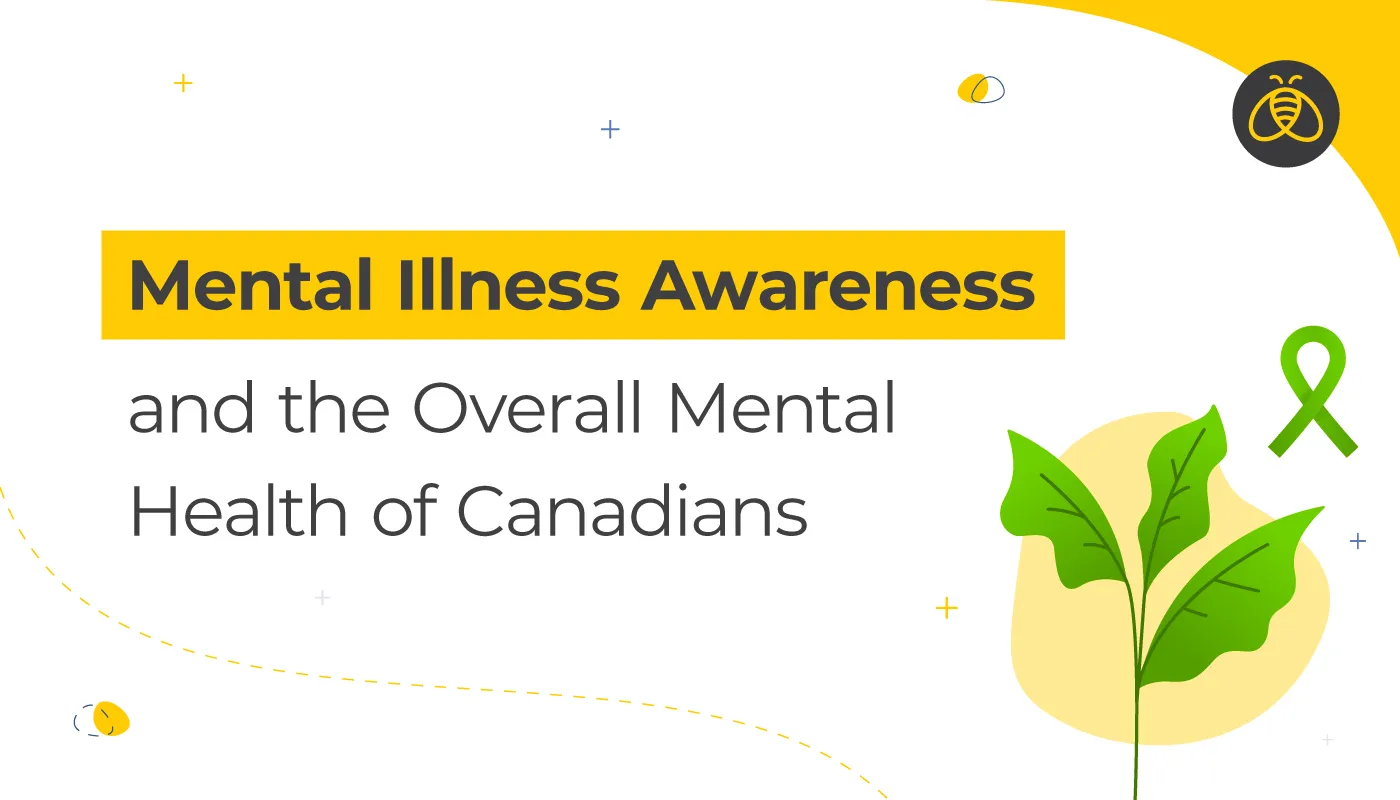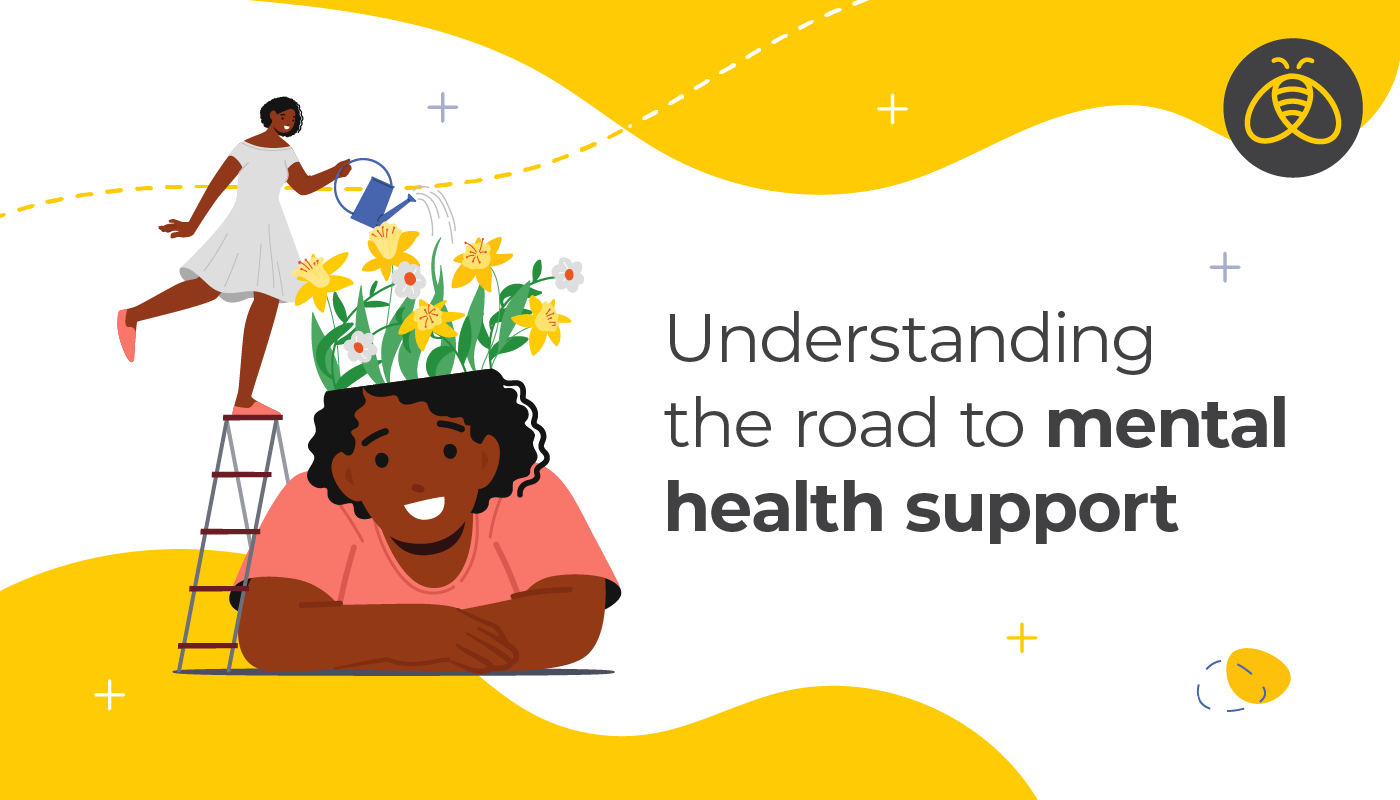Mental Illness Awareness and the Overall Mental Health of Canadians
By: Benefits by Design | Tuesday October 4, 2022
Updated : Wednesday May 10, 2023
There has been a lot of discussion surrounding Canadians’ mental health of late, and for good reason. The state of our mental health has never been worse! And when our mental health is compromised, it can lead to mental illness. But not all mental illnesses are brought on by poor mental health.
The first week of October is Mental Illness Awareness week, so we wanted to shed some light on the differences between the two, and the impacts of poor mental health.
Difference Between Mental Health and Mental Illness
Mental health is similar to physical health. It encompasses the entirety of how healthy we are physically. The same holds true for our mental health, it describes how well we are doing mentally, for good or ill. This includes your state of mind, mood, emotions and feelings. How you react and respond to good, bad, or difficult situations.
However, a mental illness is something that would be taken into account when assessing an individual’s mental health. Also known as mental health disorders, they are diagnosable medical conditions, and there are many types, including but not limited to:
- Depression
- Post-Traumatic Stress Disorder (PTSD)
- Eating Disorders
- Obsessive Compulsive Disorder (OCD)
- Bi-Polar
- Sleep-wake disorders
- Personality disorders
Simply put, mental health is the overall state of your mental wellbeing, whereas a mental illness is a diagnosable condition that affects your mental health.
Impacts of Poor Mental Health
Ever since the COVID-19 pandemic changed the world, people’s mental health has been in peril. According to the Mental Health Index, Canada’s MHI has remained between 63 and 68 since March, 2020. To put that in context, a measurement of 1-49 means our mental health is distressed, 50-79 means it is strained, and 80-100 is optimal.
Job Satisfaction
Looking at the 2022 Benefits Canada Healthcare Survey, we see that only 62% of those with poor mental health were satisfied with their job, compared to 94% with excellent or good mental health.
So, what does this translate to? Employees who are satisfied with their jobs are more productive and engaged. A comprehensive study by the Harvard Business Review found that happy and satisfied employees are 31% more productive and have a 19% increased accuracy on tasks. This indicates that as employees might not be performing at their best, something which could be remedied should they receive mental health support.
Stress and Delayed Treatment
And employees with poor mental health are more likely (14%) to delay seeking treatment, which only leads to worsening conditions and longer treatment times.
56% of employees with poor mental health experience high or extremely high levels of daily stress, compared to just 27% for all employees. This is a significant difference, and is another reason why investing in mental health and having a thriving wellness culture is more important than ever.
Drug Trends: The Use of Antidepressants – Overall Cost and Prevalence
Employer Concerns
Lastly, the long-term effects of COVID-19 on Canadian employees’ mental health has employers nervous. The MHI declared their pre-pandemic benchmarking no longer applied since it does not appear we will ever go back to the lesser stress levels we saw before the pandemic.
And when asked what they think the largest impact of COVID-19 will be on benefits plans, employers agreed two years in a row that the Mental Health of employees (exluding those who contracted COVID-19) was their top concern.
On top of all of the above, the connections between worsening mental health and a rise in costly disability claims are clear, not to mention the losses to employee happiness, engagement, and productivity.
Fostering a Culture of Mental Health Awareness
One of the greatest indicators of success when it comes to mental health solutions in the workplace is executive buy-in. If employers and management are not actively promoting and encouraging a workplace culture that prioritizes mental health, employee buy-in suffers — and so does your ROI.
Overcoming Mental Health Stigma in the Workplace & Supporting Employees
Building a workplace that prioritizes mental health is not just about providing support, services, or even products like an Employee Assistance Program (EAP) (though that’s part of it). Nor does it need to break the bank. Instead, such a culture can come from simple things like:
- Offering personal time off (PTO) for mental health days (and encouraging them to be used!)
- Offering flexible work schedules or remote work
- Reminding employees about their coverage options
- Encouraging managers and team leads to have discussions with employees about workloads
- Providing training for people managers on how to have discussions surrounding mental health
Employers looking for ways to boost productivity and employee engagement should consider the mental health and mental illness supports they have available. A mental health awareness culture should be part of your overall wellness culture. Normalizing regular discussions around stress, anxiety and mental health and illness can improve employee morale, and ultimately, your bottom line.


